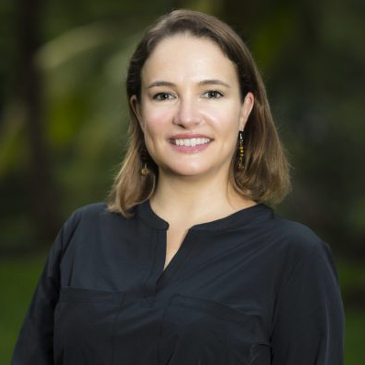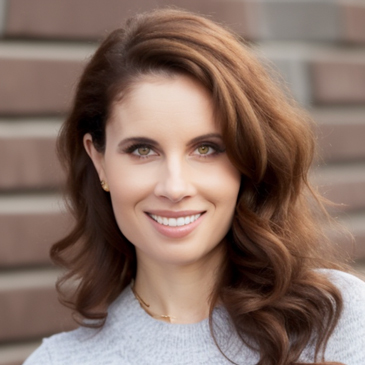The number of Americans belonging to houses of worship has tumbled over the past several decades, dropping below 50 percent in 2020 for the first time in the more than 80 years the polling company Gallup has been tracking the data. In addition, Lifeway Research reports that congregations are dwindling, with about 4,500 Protestant churches closing in 2019 and just 3,000 new churches opening.
Catherine L. Newell and Robyn Faith Walsh, both associate professors of religious studies for the University of Miami College of Arts and Sciences, view the decline of the religious faithful—which during the past 25 years has been the largest and fastest religious shift in American history—as part of broader societal moves.
For Newell, the decline has much to do with the way that people identify themselves. Her research and that of many others have revealed the surge in those who consider themselves “spiritual” vis-à-vis “religious.”
She identified the mid-1950s as the high point of religious adherence when more than 90 percent of Americans identified as Christian. With a brief interruption in the late 1980s associated with the rise of the religious right, percentages have declined driven by two demographic factors.
“One is the fact that younger millennials and Gen Zers weren’t necessarily raised in or around religion, especially in large urban areas, and they grew up amidst a lot of religious, demographic and social diversity,” Newell noted. “Religion just wasn’t something that people were using as an identity anymore.”

The second factor had to do with baby boomers who began defining their religion and religious practices in different ways. One of Newell’s mentors in graduate school, Wade Clark Roof, in the 1980s pioneered some of the research of the emergence of this generation of “seekers.”
“Sociologists noticed that people were saying they no longer practice religion and that they consider themselves to be spiritual but not religious,” she said. “Suddenly people were cobbling together personal spiritual practices, some of which are based in institutional religions and some that aren’t,” she pointed out.
“So, this is not new. This element persists today where people see no conflict between being a practicing Catholic, doing yoga, volunteering at a homeless shelter, and also practicing mindfulness meditation, which is descended from Buddhism,” she added.
Newell, a scholar of the conjoined histories of religion and science, noted that some media tends to catastrophize this decline.
“There’s this sense that this is terrible, religion is vanishing. And in the conservative media, a notion that . . . everybody is now atheists,” Newell said. “But the percentage of atheists and agnostics has stayed stable, especially compared to the rise of people who identify as ‘no religious affiliation.’ It’s not so much that people are now identifying as atheists as it is that people are seeking something outside of institutionalized religion and have their own spiritual practice.”

Walsh’s perspective focuses on the community component that religion often has satisfied. Her expertise in the ancient Mediterranean world—from which Christianity emerged—explored people who worshipped many local gods and later how parishes and churches became the centerpiece of a whole neighborhood.
“The decline is one expression of a larger societal trend that encompasses changes in the workplace, in demographics, in terms of where people live, and changes in societal expectations about what you’re supposed to do with yourself or with your life,” Walsh said. “It shows how much religion is one sphere of social life that is impacted significantly but equal to other ways that we organize ourselves or create community today,” she added.
“This has greater implications for the way that social structures work in the 20th and 21st centuries,” Walsh continued. “Very few of us end up living in or finding jobs in the place where we’re born—or maybe we don’t want to do that. We go off to school or take a job or we work from home. We don’t necessarily know our neighbors. This is part of the social dynamics that have changed drastically in the last couple of generations.”
Religion in the political arena
Yet, despite the downturn in those identifying as religious, religion seems to be more visible—especially in the political spectrum—than ever.
“In the 1960s, you had a radical shift where values began to change,” Walsh explained. “Before that and in the aftermath of the world wars, ideas reaffirming what it meant to be American were statistically tied to Christianity.”
But, she continued, “in the 1960s things changed. There was a more liberal outlook, and we saw that kind of tension in the debates of [William F.] Buckley and [Gore] Vidal on what it meant to be an American,” Walsh added. “We started to see a focus on Christian values and nationalism being tied to political ideology versus liberal values. There’s a bifurcation there, and we’re still experiencing that.”
Both religious scholars highlighted the impact of the pandemic on the decline of churchgoers.
“During the pandemic you had to make different choices about levels of risk,” Walsh said. “This dovetails with the broader trend of people who consider themselves spiritual instead of religious. If you’re spiritual, that’s internalized, so you don’t have to go to church,” she added.
“There’s also a social element to this kind of churchgoing where you saw your neighbor or you were part of a membership or ancillary activity.” Walsh added. “These kinds of networks were disrupted by the pandemic.”
“Scholars are looking into who these disaffected people are and this was certainly accelerated during the pandemic,” Newell pointed out. “Some people were like ‘I can’t go to church or temple, ‘I can’t worship in certain ways,’ and just kind of dropped out. While others have been influenced by the sex abuse scandals in the Roman Catholic Church or that the Southern Baptist Convention is refusing to ordain women. So in the last few years a lot of people have just said ‘I’m done.’ ”
Students are part of the shift
Both scholars have witnessed changes in their students’ association with religion.
“Ten years ago, when I was teaching classes on religion, many of the students had grown up going to temple with their granny or to Catholic Church at Christmas, but now I get fewer and fewer students like that. It seems like religion is no longer a shared language or experience for them,” said Newell.
Walsh, who has been an instructor since the early 2000s, teaches a class on New Testament and Christianity. Some of her students are very religious and find great solace in the church and find community with their friends, with their age group, and specifically within the church, she noted.
“Yet generally I have students who don’t consider themselves nones or anything, but they’re interested in religion,” she said. “They grew up Christian but no longer are, usually for reasons of wanting to be more inclusive,” she explained.
“They’re curious about other traditions and, again, don’t feel as tightly bound to the community structures that were so prevalent in the early 20th century. This idea of spiritual, not religious, is at play for this generation,” Walsh said. “They don’t necessarily want dogmas or regulations but instead want to pick and choose the values, mores, and structures that work for their lives.”

